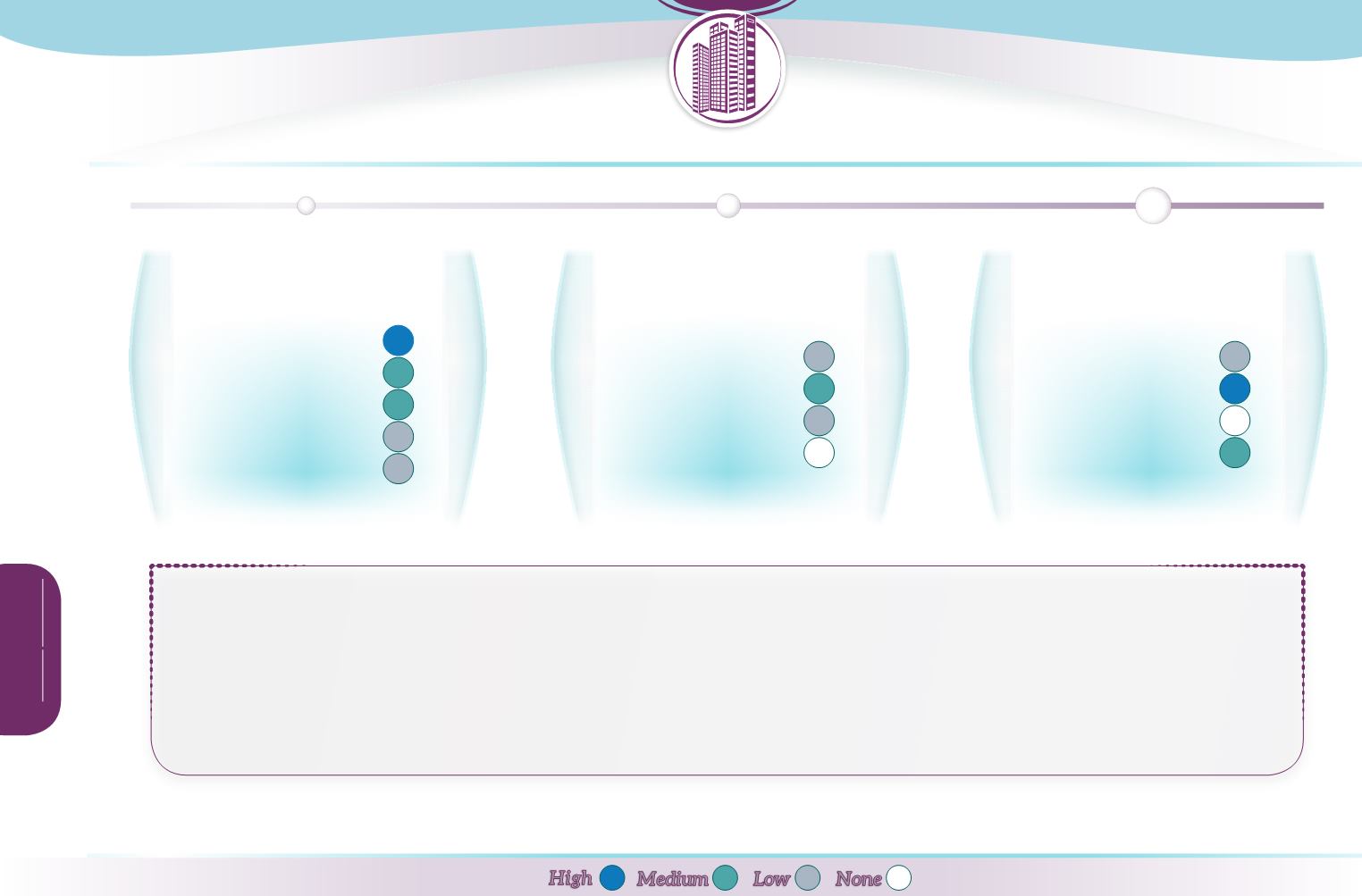
E
cosystem
servicesdelivered
Provisioning
Regulation & maintenance
Cultural
Abiotic
C
ontribution
topolicyobjectives
Water Framework Directive
Floods Directive
Birds & Habitats Directive
2020 Biodiversity Strategy
P
otential
biophysicaleffects
Runoff
Reducing pollution
Soil conservation
Habitat
Climate Change
High
Low
Medium
None
Swales are primarily intended to
slow runoff
, although they also contribute some additional storage volume. Their efficiency is highly dependent on good design and catchment/
local landscaping characteristics; in general they can reduce mean runoff by more than 50%. Used in conjunction with other SuDS features, they contribute towards sustainable
runoff management, particularly in urban areas, to reducing the
risk of surface runoff flooding
and towards reductions in
peak river flows
in small catchments.
Because of dense vegetation, swales are effective in local
sediment capture
and in reducing concentrations of associated
pollutants
. Along with the interception of surface
runoff, this contributes to reducing diffuse pollution. Thus, swales can make a small contribution to improving
water quality
in receiving waters.
Swales are often designed to allow
infiltration
(although the potential for pollution to groundwater needs to be considered), thus can make a minor contribution to enhanced
recharge. They also contributes towards biodiversity preservation and climate change adaptation. Finally, swales comprise green infrastructure in urban areas, thus contributing to
the Biodiversity Strategy.


